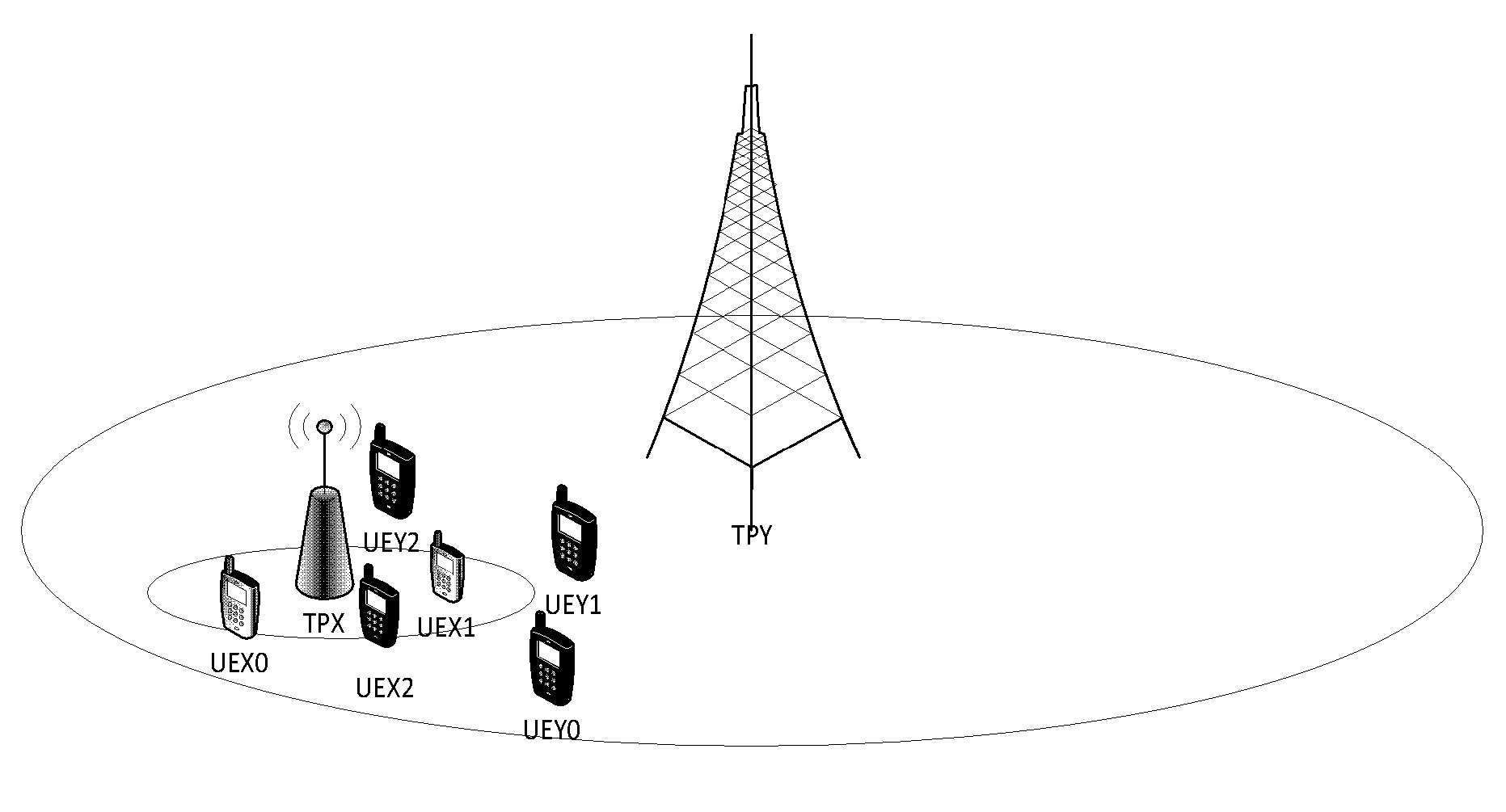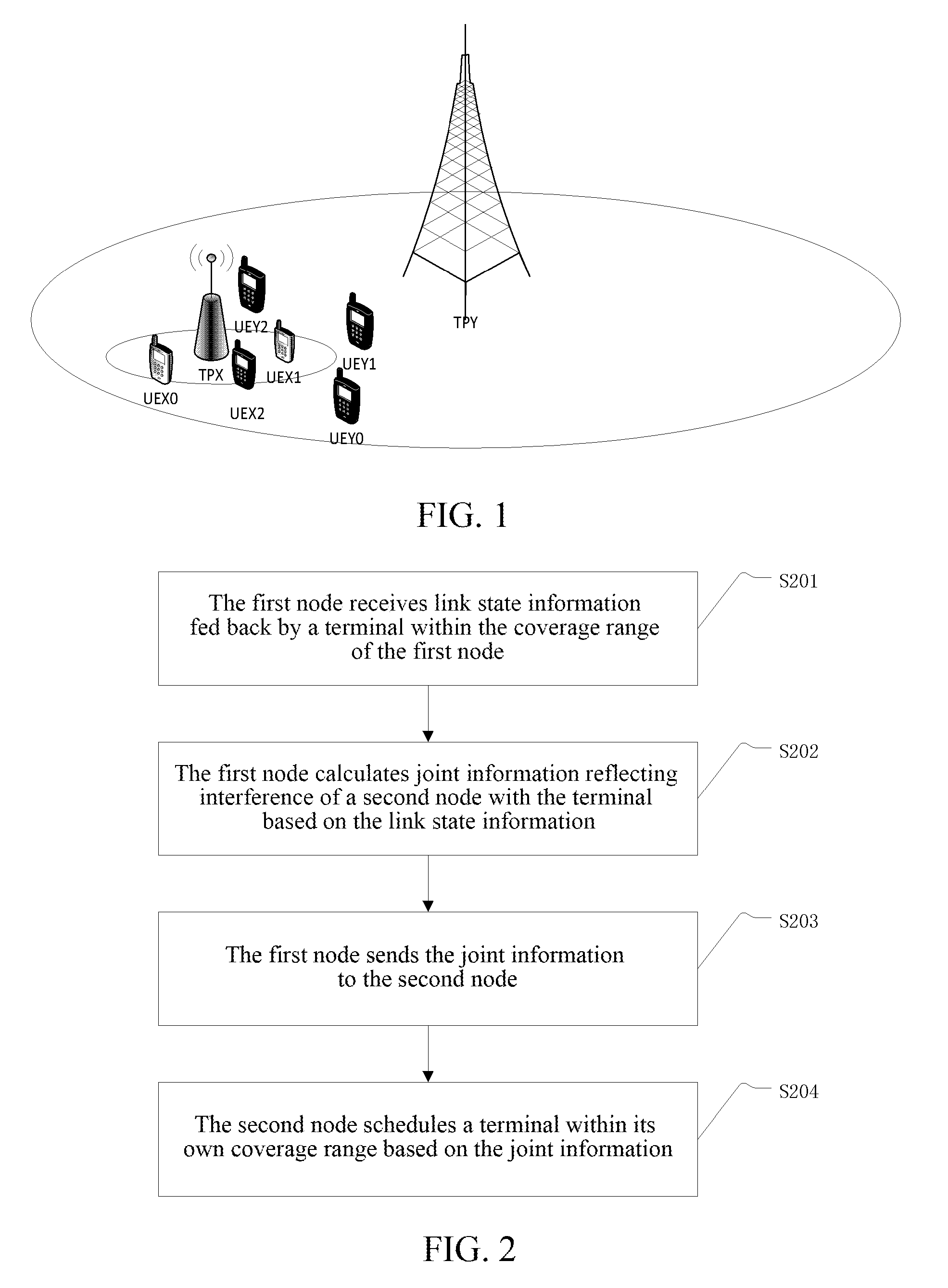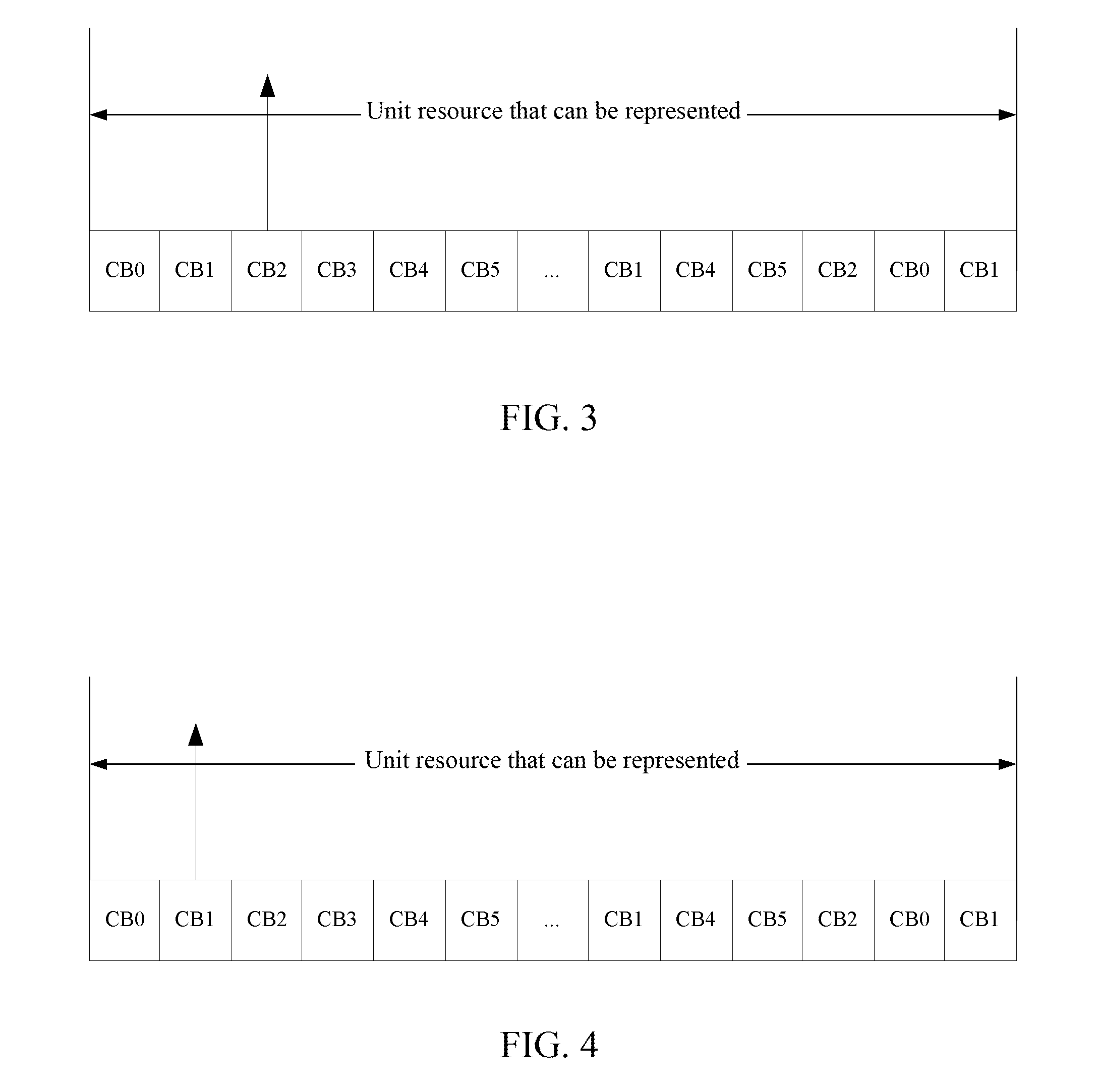Inter-Node Interference Reduction Method, Node and System
a technology of node and interference reduction, applied in the field of internal node interference reduction technologies, to achieve the effect of small interferen
- Summary
- Abstract
- Description
- Claims
- Application Information
AI Technical Summary
Benefits of technology
Problems solved by technology
Method used
Image
Examples
application example 1
[0102]this application scenario comprises two nodes TPX and TPY, there are three UEs, respectively UEX0, UEX1 and UEX2, under the TPX coverage, and there are three UEs, respectively UEY1, UEY1 and UEY2, under the TPY coverage.
[0103]In STEP1, the TPX measures or receives the link state information from the TPX to the UEXn and fed back by the UEXn (n=0, 1, 2);
[0104]in STEP2, the TPX calculates the interference codeword and the power level limit value corresponding to the codeword coming from the TPY based on the principle of minimizing interference; a plurality of interference codewords constitute a codebook limit cluster, a plurality of power level limit values constitute a power level limit cluster, and the codebook limit cluster and the power level limit cluster constitute the joint information;
[0105]in STEP3, the TPX sends the joint information to the TPY through the interface of the TPX and the TPY;
[0106]in STEP4, assuming that in the basic unit resource CB2, the optimal codeword...
application example 2
[0110]The application scenario comprises two nodes TPX and TPY, there are three UEs, respectively UEX0, UEX1 and UEX2, under the TPX coverage, and there are three UEs, respectively UEY1, UEY1 and UEY2, under the TPY coverage.
[0111]In STEP1, the TPX measures or receives the link state information from the TPX to the UEXn and fed back by the UEXn (n=0, 1, 2);
[0112]in STEP2, the TPX calculates an interference codewords, and a power level limit value as well as the priority level indication information corresponding to the codeword coming from the TPY based on the principle of minimizing interference; a plurality of interference codewords constitute a codebook limit cluster, a plurality of power level limit values constitute a power level limit cluster, a plurality of pieces of priority indication information constitute a priority indication information cluster, and the codebook limit cluster, the power level limit cluster and the priority indication information cluster constitute the j...
application example 3
[0117]The application scenario comprises two nodes TPX and TPY, there are three UEs, respectively UEX0, UEX1 and UEX2, under the TPX coverage, and there are three UEs, respectively UEY1, UEY1 and UEY2, under the TPY coverage.
[0118]In STEP1, the TPX measures or receives the link state information from the TPX to the UEXn and fed back by the UEXn (n=0, 1, 2);
[0119]in STEP2, the TPX calculates the joint information consisting of the codebook limit cluster, the power level limit cluster and the priority indication information cluster coming from the TPY based on the principle of minimizing interference;
[0120]in STEP3, the TPX sends the joint information to the TPY through the interface of the TPX and the TPY;
[0121]in STEP4, assuming that in the basic unit resource CB2, the optimal codewords of the UEY1, the UEY1 and the UEY2 are respectively B4, B5 and B6. When the TPY schedules, the TPY learns through the joint information that in the basic unit resource CB2, the optimal codewords corr...
PUM
 Login to View More
Login to View More Abstract
Description
Claims
Application Information
 Login to View More
Login to View More - R&D
- Intellectual Property
- Life Sciences
- Materials
- Tech Scout
- Unparalleled Data Quality
- Higher Quality Content
- 60% Fewer Hallucinations
Browse by: Latest US Patents, China's latest patents, Technical Efficacy Thesaurus, Application Domain, Technology Topic, Popular Technical Reports.
© 2025 PatSnap. All rights reserved.Legal|Privacy policy|Modern Slavery Act Transparency Statement|Sitemap|About US| Contact US: help@patsnap.com



